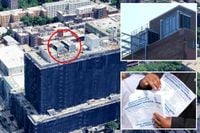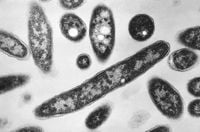The streets of Central Harlem have been gripped by anxiety and anger as New York City faces its deadliest Legionnaires' disease outbreak in a decade. With the death toll rising to five and 108 confirmed cases as of August 19, 2025, residents and advocates are demanding answers and accountability from city agencies and building owners alike. The outbreak, which has left 14 people hospitalized, has shone a harsh spotlight on the maintenance of cooling towers atop city-owned buildings, particularly Harlem Hospital and the Central Harlem Sexual Health Clinic.
According to People, city health officials have traced the outbreak to 12 cooling towers spread across 10 buildings in Central Harlem. All towers have now undergone the required treatment, with health authorities stating, "We are continuing to monitor and let buildings know if additional treatment is needed." But for many in Harlem, the city’s reassurances ring hollow, especially after weeks of uncertainty and delays in releasing the addresses of the affected buildings.
Legionnaires' disease is a severe form of pneumonia caused by inhaling mist contaminated with Legionella bacteria. The Centers for Disease Control and Prevention explains that the bacteria thrive in water systems like those found in cooling towers, especially if they are not properly maintained. Symptoms typically appear two to fourteen days after exposure and can include a high fever, cough, muscle aches, headaches, shortness of breath, confusion, nausea, and diarrhea. While antibiotics can treat the illness, it can quickly become life-threatening, leading to lung failure and, in the worst cases, death.
The current crisis was exacerbated by a series of large storms in July 2025, which left rainwater pooled in cooling towers atop Harlem Hospital and other nearby buildings. According to a press release from attorney Ben Crump, this water was left untreated, creating a perfect breeding ground for the bacteria. As FOX 5 NY reported, eleven of the twelve contaminated towers were sanitized and treated by August 15, with the final one following soon after.
Rev. Al Sharpton, president of the National Action Network, and civil rights attorney Ben Crump have stepped forward to represent affected residents and workers. At a press conference scheduled for August 20, they plan to announce a lawsuit against a construction company alleged to have neglected proper cleaning protocols for the cooling towers. Sharpton did not mince words, telling the New York Post, "We clearly should be monitoring this more closely. We have to be diligent about it. We cannot allow this Legionnaires’ outbreak to be normalized." Crump’s office added that several construction workers who contracted Legionnaires' disease after working in Harlem have retained his legal services.
The legal action dovetails with mounting frustration among Harlem residents, who feel city authorities failed to act swiftly or transparently. Nichole Ingram, who contracted the illness after attending a funeral in an impacted building, voiced a question on the minds of many: "Why weren’t these cooling towers properly maintained? Who dropped the ball and why?" Her son was also hospitalized with the disease, underscoring the outbreak’s personal toll on families.
Compounding the outrage is the revelation that four of the twelve cooling towers testing positive for Legionella were on city- or government-owned properties, including Harlem Hospital and the Central Harlem Sexual Health Clinic on West 137th Street. State law and city health codes require building owners to test for Legionella every 90 days, while city health department scientists are supposed to conduct annual inspections. Yet, a New York Post analysis uncovered 18 violations at the Sexual Health Clinic’s cooling tower since 2017, with no city record indicating whether it had been tested for Legionella prior to a new tower being installed in June 2025.
The timeline of the outbreak is equally troubling. The first positive diagnoses were made on July 22, 2025, but at least one patient, Daniel Mckeithan, began feeling ill as early as June 19. Mckeithan, a chef, recounted his ordeal: "I was scared. It affects your lungs. I still feel a pull on lungs. Legionnaires’ hits you — and it hits you real fast." He was treated at Harlem Hospital, only to later learn that the very facility’s cooling tower had tested positive for the bacteria. "You’re talking about a government building," he said. "They should be minding their Ps and Qs."
Legal scrutiny is mounting. Jory Lange, an attorney representing 44 Legionnaires’ patients in the current outbreak, including one who died, already has a pending lawsuit against the city’s Health + Hospitals stemming from a 2021 outbreak linked to Harlem Hospital’s cooling towers. Lange called it "very disturbing" that a third of the contaminated towers were government-owned, asking, "Who knows how long the cooling towers were positive?" Co-counsel Scott A. Harford, who represented plaintiffs in a 2018 Washington Heights outbreak, warned, "It’s concerning that there are so many city-owned entities that are having issues maintaining their water, and that requires an examination of their water quality plan, who they’re using and how they’re maintaining their water."
The sense of neglect resonates deeply in Harlem. Robert, a 59-year-old local, called the city "irresponsible," adding, "It’s a city run hospital goddamn it. I don’t believe in coincidences. I don’t believe that this could not have been prevented. It’s only happening in Harlem." Toya M., a resident living across from the clinic, echoed a feeling of being overlooked: "We are always forgotten. Had this been a white neighborhood, they would’ve been inspected regularly. Harlem is always last on the list for everything, obviously."
Mayor Eric Adams, for his part, defended the city’s health department at a recent event, insisting, "I don’t think anyone could accuse the Department of Health and Mental Hygiene of not really being proactive and reactive, when it comes out to saving the lives of New Yorkers." Health Commissioner Michelle Morse explained the city’s hesitance to release building addresses, stating, "We did not want people to think, well, I don’t live there, I don’t have to worry." But for residents and advocates, these explanations have done little to quell the sense of unease and betrayal.
As Harlem grapples with the aftermath of the outbreak, the community’s demands for accountability and reform are only growing louder. The lawsuit led by Sharpton and Crump may force a reckoning over how New York City manages public health risks in its most vulnerable neighborhoods. For now, the people of Harlem are left to wonder how many more warnings it will take before lasting change arrives.

